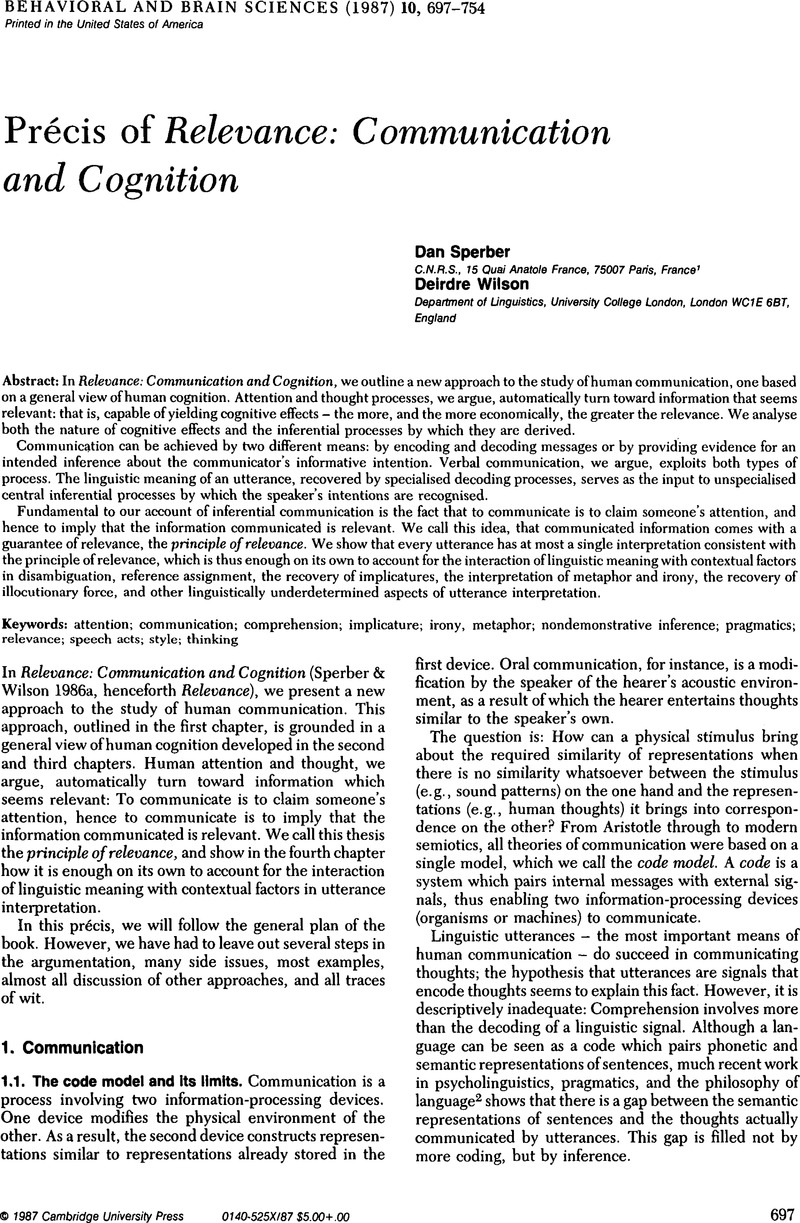Crossref Citations
This article has been cited by the following publications. This list is generated based on data provided by Crossref.
Gorayska, Barbara
and
Lindsay, Roger
1993.
The roots of relevance.
Journal of Pragmatics,
Vol. 19,
Issue. 4,
p.
301.
Attardo, Salvatore
1997.
Locutionary and perlocutionary cooperation: The perlocutionary cooperative principle.
Journal of Pragmatics,
Vol. 27,
Issue. 6,
p.
753.
Yus Ramos, Francisco
1998.
A decade of relevance theory.
Journal of Pragmatics,
Vol. 30,
Issue. 3,
p.
305.
Attardo, Salvatore
1998.
Are socio-pragmatics and (Neo)-Gricean pragmatics incompatible?.
Journal of Pragmatics,
Vol. 30,
Issue. 5,
p.
627.
Jordan, Michael P.
1998.
The power of negation in English: Text, context and relevance.
Journal of Pragmatics,
Vol. 29,
Issue. 6,
p.
705.
Cooren, François
and
Sanders, Robert E.
2002.
Implicatures: a schematic approach.
Journal of Pragmatics,
Vol. 34,
Issue. 8,
p.
1045.
Haberland, Hartmut
and
Mey, Jacob L.
2002.
Linguistics and pragmatics, 25 years after☆.
Journal of Pragmatics,
Vol. 34,
Issue. 12,
p.
1671.
Bahmani, Abdullah
and
Hjelsvold, Rune
2019.
Digital Transformation for a Sustainable Society in the 21st Century.
Vol. 11701,
Issue. ,
p.
654.



